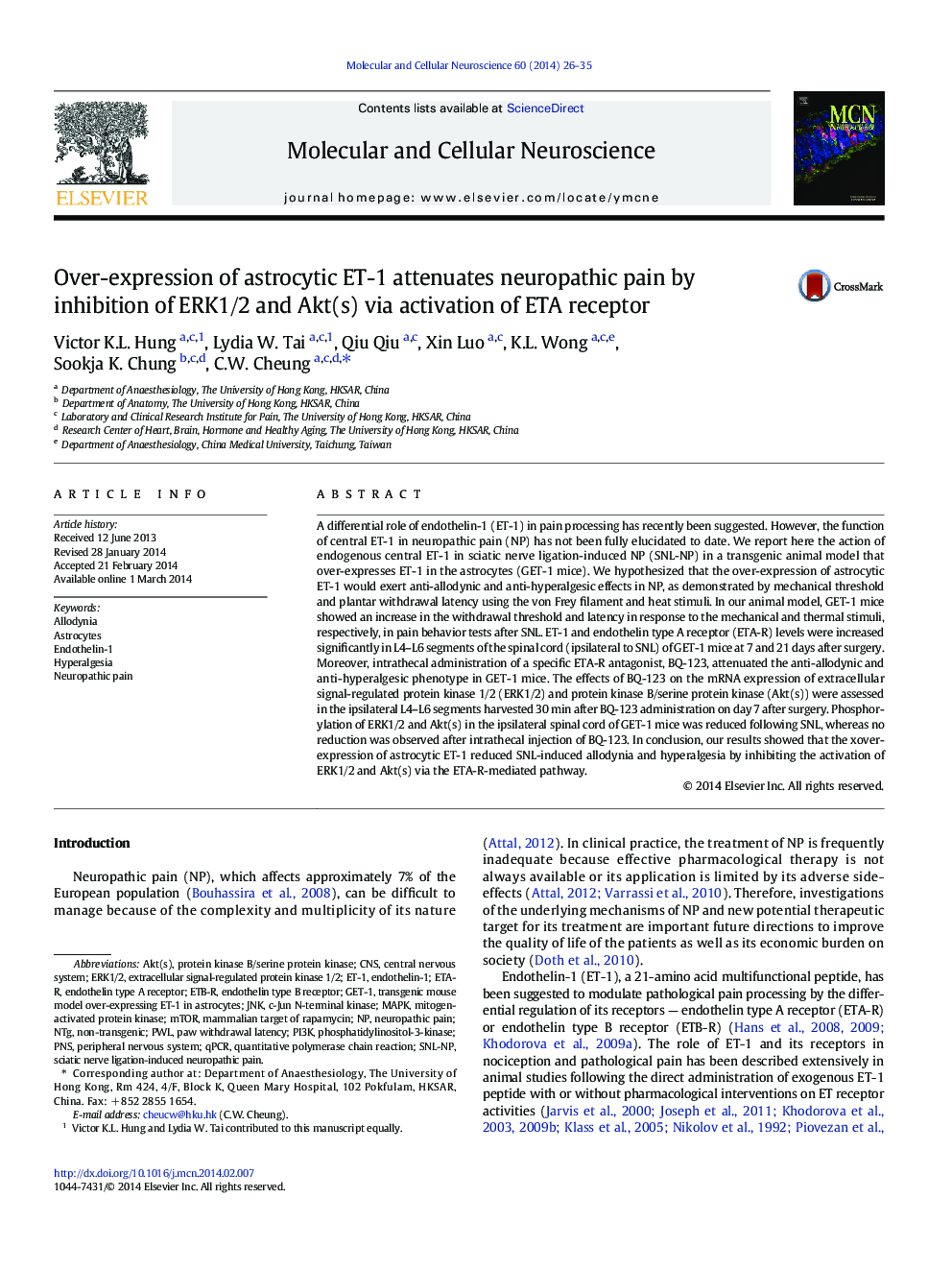| کد مقاله | کد نشریه | سال انتشار | مقاله انگلیسی | نسخه تمام متن |
|---|---|---|---|---|
| 2198475 | 1551145 | 2014 | 10 صفحه PDF | دانلود رایگان |

A differential role of endothelin-1 (ET-1) in pain processing has recently been suggested. However, the function of central ET-1 in neuropathic pain (NP) has not been fully elucidated to date. We report here the action of endogenous central ET-1 in sciatic nerve ligation-induced NP (SNL-NP) in a transgenic animal model that over-expresses ET-1 in the astrocytes (GET-1 mice). We hypothesized that the over-expression of astrocytic ET-1 would exert anti-allodynic and anti-hyperalgesic effects in NP, as demonstrated by mechanical threshold and plantar withdrawal latency using the von Frey filament and heat stimuli. In our animal model, GET-1 mice showed an increase in the withdrawal threshold and latency in response to the mechanical and thermal stimuli, respectively, in pain behavior tests after SNL. ET-1 and endothelin type A receptor (ETA-R) levels were increased significantly in L4–L6 segments of the spinal cord (ipsilateral to SNL) of GET-1 mice at 7 and 21 days after surgery. Moreover, intrathecal administration of a specific ETA-R antagonist, BQ-123, attenuated the anti-allodynic and anti-hyperalgesic phenotype in GET-1 mice. The effects of BQ-123 on the mRNA expression of extracellular signal-regulated protein kinase 1/2 (ERK1/2) and protein kinase B/serine protein kinase (Akt(s)) were assessed in the ipsilateral L4–L6 segments harvested 30 min after BQ-123 administration on day 7 after surgery. Phosphorylation of ERK1/2 and Akt(s) in the ipsilateral spinal cord of GET-1 mice was reduced following SNL, whereas no reduction was observed after intrathecal injection of BQ-123. In conclusion, our results showed that the xover-expression of astrocytic ET-1 reduced SNL-induced allodynia and hyperalgesia by inhibiting the activation of ERK1/2 and Akt(s) via the ETA-R-mediated pathway.
Journal: Molecular and Cellular Neuroscience - Volume 60, May 2014, Pages 26–35